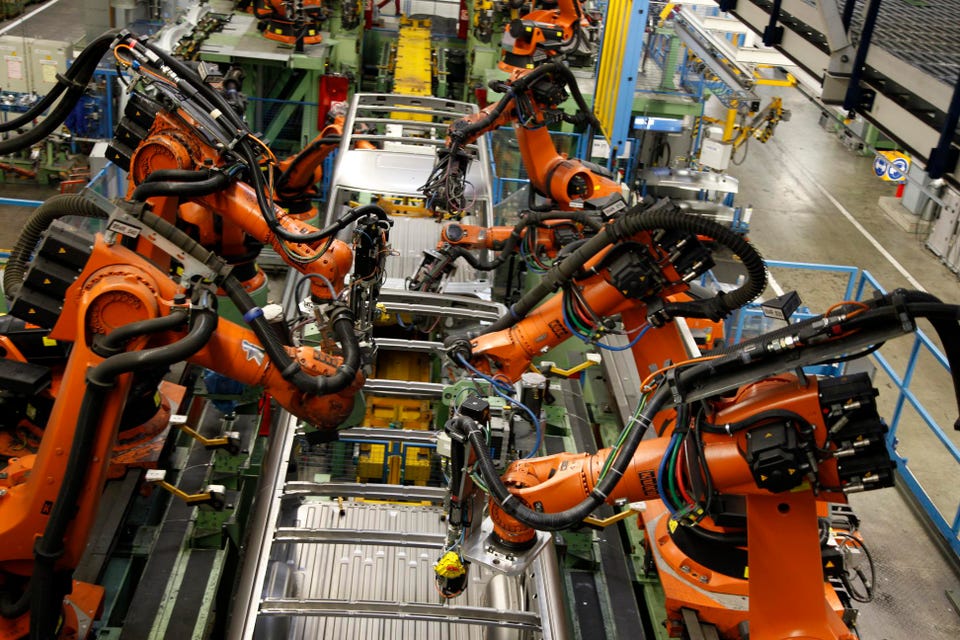The Industrial Technology Architecture Paradigm: The Future Is Boundless Automation

Peter Zornio is CTO for Emerson, a Fortune 200 global technology and engineering company headquartered in St. Louis, Mo.

getty
Industrial automation is facing an inflection point. From the global pandemic that accelerated technology adoption and recent supply chain issues to a drive toward self-optimized plants and today’s “digital native” workforce, there is a huge paradigm shift happening as the industry grapples to predict what’s next.
At the same time, technology developments are transforming operating models. Manufacturers today increasingly seek software and cloud technologies to operationalize vast amounts of data designed to help them run their facilities at optimal performance. They are turning to these same advanced automation technologies to track emissions and energy usage while accelerating new energy options like hydrogen and biofuels—all critical to meeting their aggressive net-zero targets.
But even the plants built within the past few years are challenged by decades-old technology designs. Manufacturing facilities are dependent on purpose-built hardware and a rigid, hierarchical architecture of plant sensing, information and control that creates silos of information and limits data flexibility. This approach separates operational technology (OT) data from information technology (IT), creating application-specific information repositories and establishing firm network barriers for cybersecurity.
The result is these repositories of equipment, production, sustainability and quality data are analyzed and optimized in silos, rather than the true complete plant or enterprise-level optimization manufacturers need. A recent MIT Technology Review Insights article by Emerson’s asset optimization software business, AspenTech, reported: “Industrial organizations are accumulating massive volumes of data but deriving business value from only a small slice of it.”
Merely connecting these silos of data to a common cloud repository can create more of a “data swamp” than a data lake due to the highly varied contexts and data models each repository brings. Many digital transformation programs have discovered that utilization of that data in value-producing applications is hugely challenging due to these issues. More than ever, manufacturers need a better architecture to help them collect, manage, analyze and make good use of the valuable operational data that is siloed at facilities and across enterprises.
At my company, we envision a future of boundless automation and are designing the next-generation industrial architecture that will empower manufacturers to seamlessly and easily connect, manage and integrate highly contextualized data from the intelligent field, edge and into the cloud.
This new industrial automation and operations architecture will be increasingly software-centric, designed for greater flexibility, and inherently secure by design. Software applications will execute directly in intelligent field devices, in next-generation edge computing and control environments and in the cloud—all unified in a cohesive software platform. Sharing a common context and data model across the architecture will “democratize” all data, unleashing the power of easy and direct utilization of in value-generating applications and analytics tools. Applications will execute in whichever of the three computing domains best fits latency, privacy, cost and accessibility requirements.
The new architecture will be a modular yet cohesive software platform, unburdened by data barriers, enabling users to incorporate innovative new applications and technology without excessive efforts on data and application integration. The architecture will be designed for incorporating and utilizing data from not just traditional production sensors and systems, but new data for reliability, sustainability, quality and other manufacturing operations functions in whichever computing domain is appropriate.
As the industrial sector faces this pivotal moment, intersecting priorities of safety, productivity and sustainability are forcing a crossroads between “the ways things have always been done” and the tech-powered vision of tomorrow. This shift will lead to a platform that is significantly more interoperable, extensible and scalable—critical to realizing the promise of digital transformation.
Companies should be preparing for this future today—both technologically and organizationally. Retrofitting existing facilities with technologies such as wireless sensor networks, secure connection of on-premise data to the cloud and new edge computing-based applications can all be done now—and may bring many benefits even before legacy systems are ready for replacement.
New data and applications for reliability, sustainability and safety can be implemented alongside existing automation, setting the base architecture for the next generation of automation. Just as importantly, employees need to adopt new technology-driven work processes across the board, even if it pushes them out of a “that’s how we always did it” comfort zone.
Finally, traditionally siloed functional organizations can be combined into overall “manufacturing performance” teams that balance these potentially conflicting goals into a truly optimized facility.
Forbes Technology Council is an invitation-only community for world-class CIOs, CTOs and technology executives. Do I qualify?
